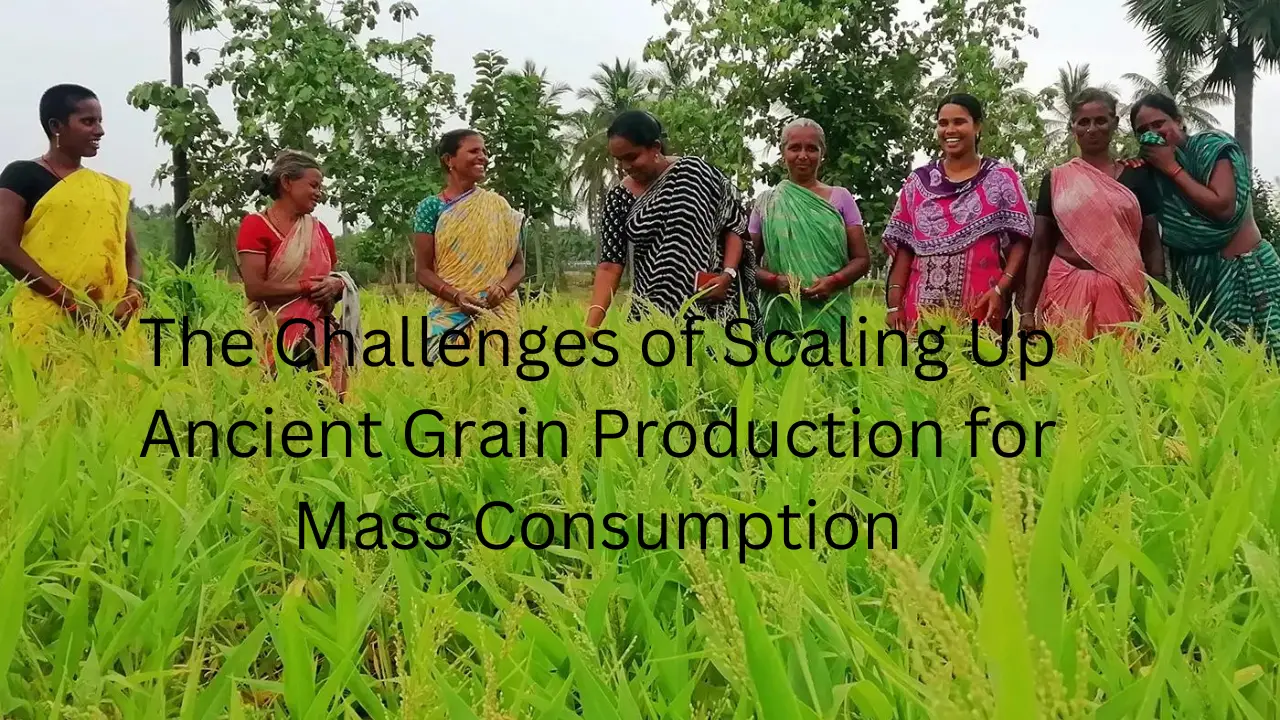
Electric Pressure Washer, 4200 PSI 2.5 GPM Power Washer with 4 Quick Connect Nozzles, High Pressure Cleaning Machine with Foam Cannon for Cars/Fences/Driveways/Patios/Home Cleaning
25% OffThe Challenges of Scaling Up Ancient Grain Production for Mass Consumption
The resurgence of interest in ancient grains has sparked a desire for these nutrient-rich and culturally significant foods to reach a broader audience. However, the journey from traditional cultivation to mass consumption is not without its challenges. In this article, we’ll delve into the complexities of scaling up ancient grain production to meet the demands of modern mass consumption while addressing various obstacles that arise along the way.
Introduction
As ancient grains transition from being cherished by niche enthusiasts to entering the mainstream, the agricultural and food industries must navigate a complex landscape of production, distribution, and consumption.
The Ancient-Modern Balance
The challenge lies in harmonizing traditional practices with modern demands:
- Cultural Significance: Ancient grains hold cultural significance, requiring preservation of their heritage.
- Mass Consumption: Scaling up production involves modern techniques and technologies.
Challenges in Scaling Up Ancient Grain Production
1. Limited Genetic Diversity
Ancient grains boast diverse genetic varieties, but modern agriculture often favors monocultures for efficiency. Preserving genetic diversity is vital to avoid susceptibility to pests and diseases.
2. Infrastructure and Technology
Modern farming demands infrastructure and technology that may not be readily available in regions where ancient grains have historical roots. Investments are needed for processing, storage, and transportation.
3. Agronomic Practices
Traditional farming methods may not be optimized for large-scale production. Adaptation and experimentation are necessary to ensure efficient cultivation without compromising nutritional quality.
4. Market Demand and Supply
The demand for ancient grains is increasing, but meeting this demand sustainably poses challenges. Balancing supply and demand while avoiding overproduction or scarcity requires careful planning.
5. Climate Variability
Climate change can impact ancient grain production due to shifting weather patterns and increased risks of pests and diseases. Resilience strategies are needed to mitigate these effects.
6. Education and Awareness
Educating both farmers and consumers about the value of ancient grains is essential. Encouraging farmers to adopt these crops and consumers to embrace them requires awareness campaigns and education.
Sustainable Solutions and Innovations
Diverse Cultivation: Promoting diverse cropping systems that incorporate ancient grains can enhance soil health and resilience.
Research and Development: Investing in research for improved varieties, cultivation practices, and processing methods can boost yields and quality.
Collaboration: Collaborative efforts between farmers, researchers, and industry stakeholders can address challenges holistically.
Value Chains: Developing efficient value chains that connect farmers to markets ensures fair compensation and reduces waste.
Consumer Education: Educating consumers about the nutritional benefits and culinary uses of ancient grains fosters demand and appreciation.
Conclusion
The journey to scale up ancient grain production while maintaining their integrity and nutritional value is a complex task. It requires a delicate balance between preserving cultural heritage and embracing modern agricultural and food systems. By addressing challenges through sustainable solutions and innovations, we can ensure that ancient grains continue to nourish both the body and the spirit for generations to come.
FAQs
- Can ancient grains be grown using organic farming practices? Yes, ancient grains are well-suited for organic farming practices that align with their traditional cultivation methods.
- Are there government initiatives supporting ancient grain cultivation? Some regions have implemented initiatives to promote the cultivation of ancient grains as part of sustainable agriculture programs.
- How can consumers contribute to the scaling up of ancient grain production? Consumers can support the growth of ancient grain production by purchasing products made from these grains and advocating for their inclusion in local markets.
- What role does research play in addressing challenges in ancient grain production? Research is crucial for developing improved varieties, addressing agronomic challenges, and finding sustainable solutions to scaling up production.
- Are there any risks associated with large-scale production of ancient grains? Risks include potential loss of genetic diversity, soil degradation, and overreliance on certain varieties if not managed carefully.











